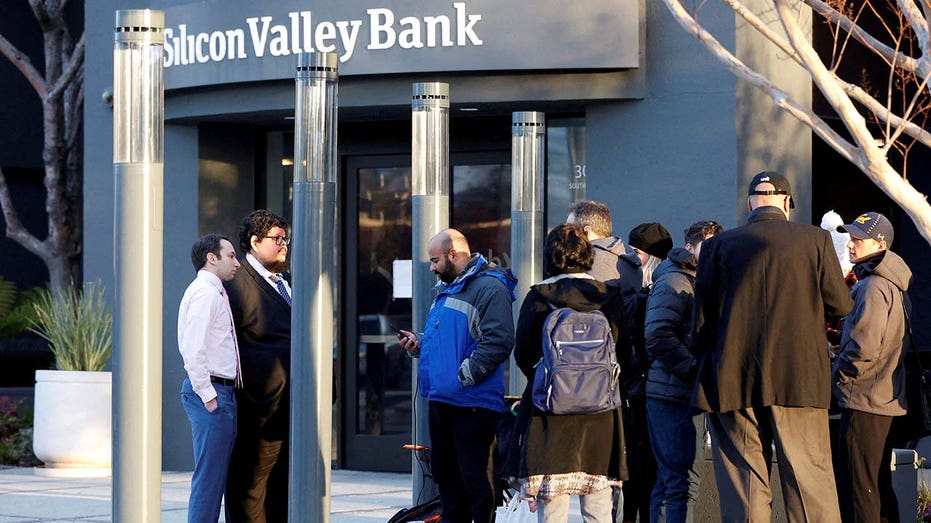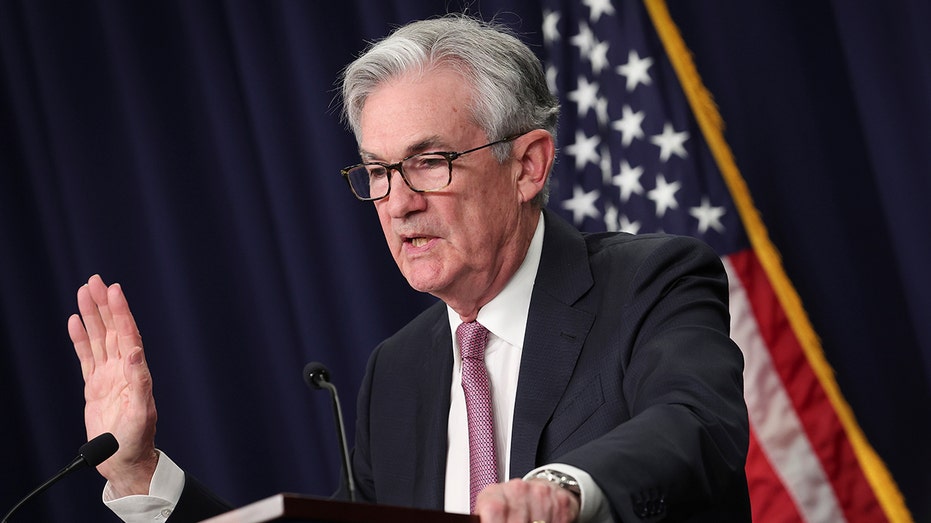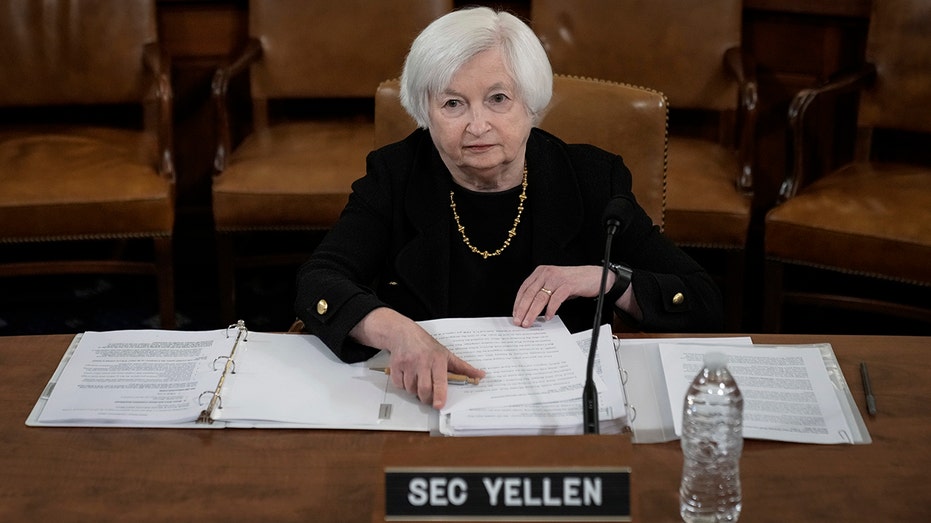Silicon Valley Bank: What we learned, what’s next after the collapse
Regulators are reviewing SVB's collapse amid a rapid bank run and the failure of its risk management and regulators' actions
Does the US need more regulations following the banking crisis?
Former Federal Reserve Vice Chair Randal Quarles and Cornerstone Research Senior Adviser William Silber give their take on how the government should be responding to bank failures on Kudlow.
The collapse of Silicon Valley Bank has prompted scrutiny among federal regulators and lawmakers in Congress about what went wrong and raised questions regarding what legislative or regulatory reforms may be considered to avoid a future recurrence.
Federal Reserve Vice Chair for Supervision Michael Barr testified this week before House and Senate committees with jurisdiction over America’s banking system on how the management of Silicon Valley Bank (SVB) "did not effectively manage its interest rate risk and liquidity risk, and the bank then suffered a devastating and unexpected run by its uninsured depositors in a period of less than 24 hours."
SVB had an unusually large base of uninsured deposits, which made up over 93% of the bank’s total deposit base at the end of last year, according to regulatory filings.
Barr said those were largely from venture capital firms and technology companies that created a deposit base that was "highly concentrated and could be volatile" because those firms tend to lack operating revenue and instead keep large balances above the $250,000 Federal Deposit Insurance Corporation (FDIC) threshold in banks to meet payroll and operating expenses.
YELLEN WARNS BANK DEREGULATION MAY HAVE ‘GONE TOO FAR’ AFTER SVB FAILURE

Federal policymakers are reviewing the bank run that brought down Silicon Valley Bank along with failures by the bank's management and regulators. (REUTERS/Brittany Hosea-Small / Fox News)
SVB also invested heavily in long-term Treasury securities to increase its yield and boost profits. As the Fed raised interest rates over the past year in an effort to tamp down inflation, the value of SVB’s bond portfolio declined.
"The bank waited too long to address its problems, and, ironically, the overdue actions it finally took to strengthen its balance sheet sparked the uninsured depositor run that led to the bank’s failure," Barr explained.
LAWMAKERS MULL RAISING FDIC INSURANCE CAP IN WAKE OF SVB BANK RUN
SVB had to sell some of those securities at a loss of $1.8 billion March 8 to boost its liquidity and announced a plan to raise capital.
"Uninsured depositors interpreted these actions as a signal that the bank was in distress," Barr said.
In response, social media saw a surge in talk about a run, and uninsured depositors acted quickly to flee. Those uninsured depositors "withdrew funds at an extraordinary rate, pulling more than $40 billion in deposits from the bank on Thursday, March 9."
SVB indicated it expected even bigger outflows the following day and lacked the cash and collateral to meet those rapid outflows, and it failed March 10.

Federal Reserve Chairman Jerome Powell tasked the Fed's Vice Chair for Supervision Michael Barr with leading a review of Silicon Valley Bank's failure. (Win McNamee/Getty Images / Getty Images)
The Federal Reserve is reviewing the failure of SVB as the central bank "was fully responsible for the federal supervision and regulation of the bank," Barr said. He noted that the Fed’s supervisors found deficiencies in SVB’s risk management and noted them on several occasions:
- In late 2021, the Fed issued six supervisory findings related to liquidity stress testing, contingency funding and liquidity risk management.
- In May 2022, supervisors issued three findings related to ineffective board oversight, risk management flaws and ineffective internal audits.
- SVB’s bank management rating was lowered to "fair," and its controls were rated as "deficient-1" in the summer of 2022.
- The Fed expressed concerns about SVB’s interest rate risks in October and November 2022, but Barr noted, "The bank’s response was clearly not an effective response."
SILICON VALLEY BANK’S RAPID WITHDRAWALS, MANAGEMENT MISSTEPS CREATED PERFECT STORM
The Fed’s Board of Governors met in mid-February 2023 about the impact of rising interest rates on banks’ financial condition and noted SVB’s risk profile in particular.
"Staff relayed that they were actively engaged with SVB but, as it turned out, the full extent of the bank’s vulnerability was not apparent until the unexpected bank run on March 9," Barr said.
SVB bailout only took place after California Democrats pressed Biden admin: Tom Fitton
Judicial Watch President Tom Fitton gives his take on President Biden's response to the Silicon Valley Bank collapse on 'Making Money.'
An ongoing review of SVB’s collapse by the Federal Reserve is focusing on whether the central bank’s supervision was appropriate given SVB’s rapid growth and vulnerabilities.
"While the Federal Reserve’s framework focuses on size thresholds, size is not always a good proxy for risk, particularly when a bank has a non-traditional business model," Barr said.
To address that, the Fed created a "dedicated novel activity supervisory group" with experts focused on the risk of novel activities, which Barr said "should help improve the oversight of banks like SVB in the future."
HOW THE BANKING CRISIS COULD HAMMER SMALL BUSINESSES
What’s next?
The Fed’s review of SVB’s failure will wrap up with a public report on its findings that will be released May 1, but policymakers are already looking at potential moves they may make to prevent a similar bank run in the future.
Treasury Secretary Janet Yellen said in remarks this week that past banking deregulation "may have gone too far" and that regulators should look at the impact of those decisions "and take any necessary actions in response."

Treasury Secretary Janet Yellen has said banking regulations may need to be tightened in the wake of Silicon Valley Bank's collapse. (Drew Angerer/Getty Images / Getty Images)
The Biden administration released a statement Thursday calling for the reinstatement of banking regulations that were reformed under a bipartisan bill in 2018, although a White House official said that agencies will act independently on their own timeline.
GET FOX BUSINESS ON THE GO BY CLICKING HERE
A potential increase in the FDIC’s $250,000 limit on deposit insurance figured prominently in the discussion given that federal regulators granted a systemic risk exception to protect all of SVB’s depositors, including those with balances in excess of the insurance threshold.
Under Secretary of the Treasury for Domestic Finance Nellie Liang told lawmakers she would support a study into the feasibility of changing the FDIC’s deposit insurance limits, which were last increased after the 2007-08 financial crisis from $100,000 to $250,000. However, concerns have been raised about the trade-offs involved with increasing the insurance limit because it could encourage more risk taking by banks.





















